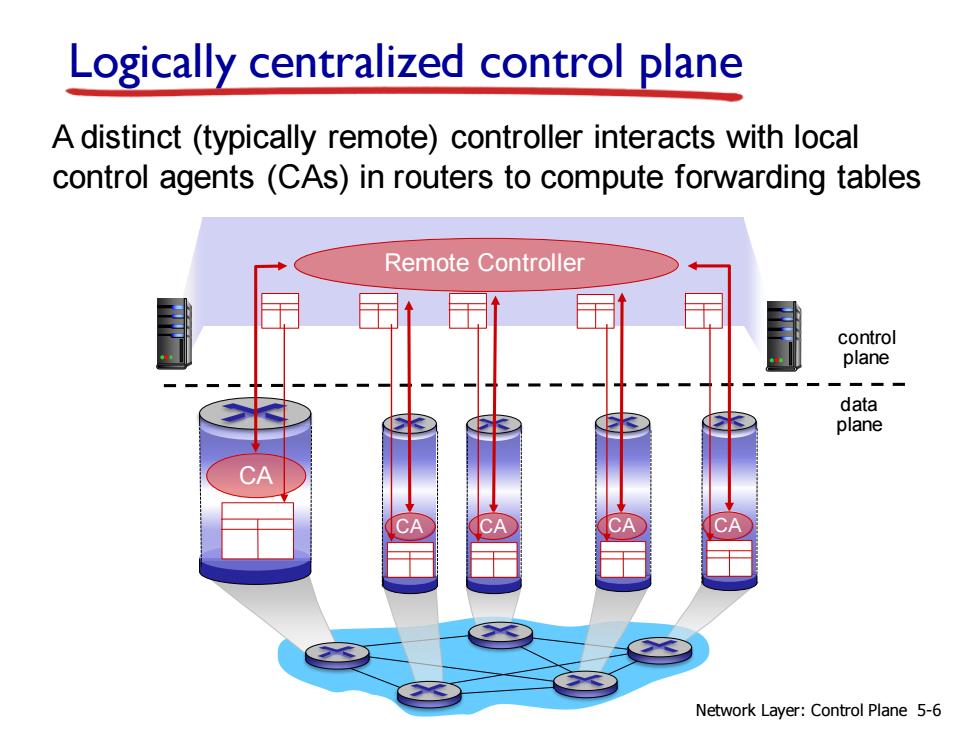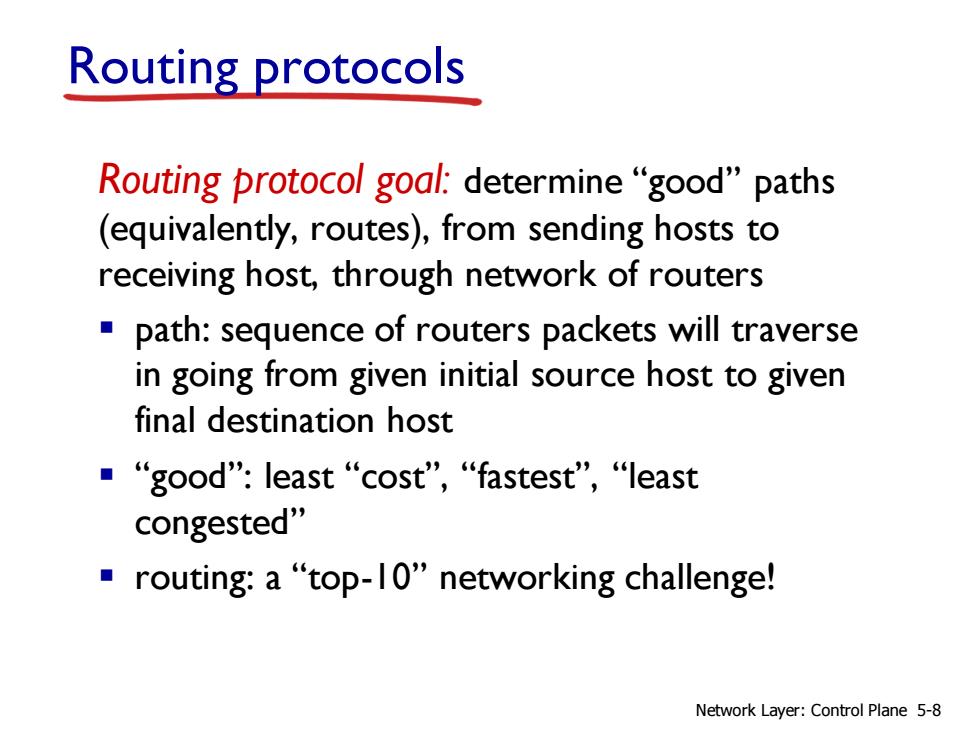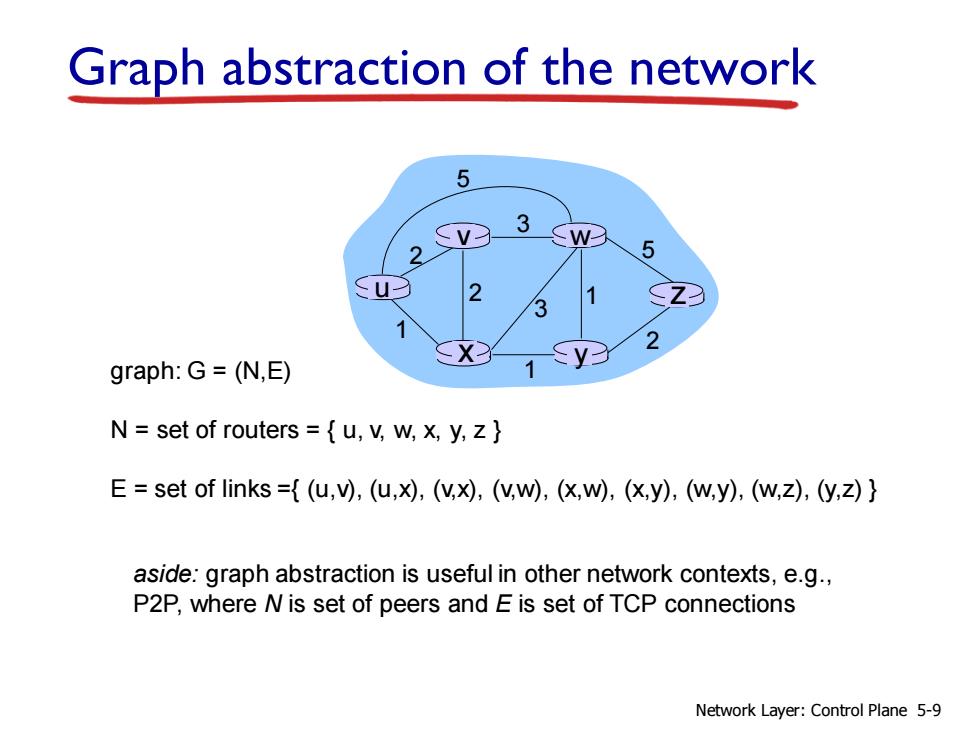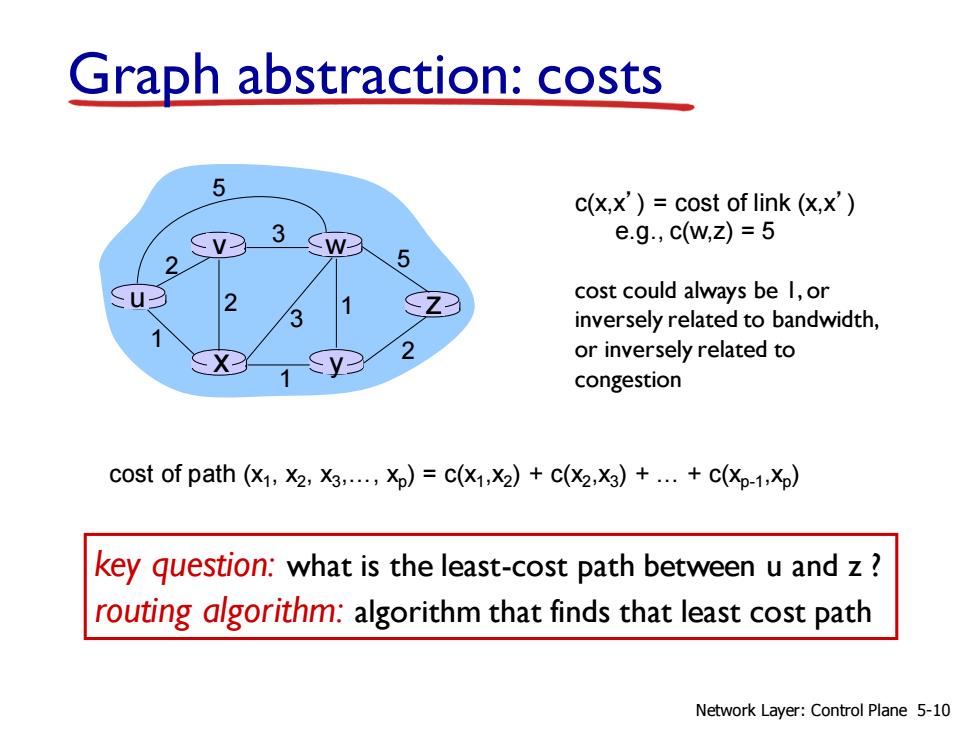
Logically centralized control plane A distinct (typically remote)controller interacts with local control agents(CAs)in routers to compute forwarding tables Remote Controller control plane data plane A Network Layer:Control Plane 5-6
data plane control plane Logically centralized control plane A distinct (typically remote) controller interacts with local control agents (CAs) in routers to compute forwarding tables Remote Controller CA CA CA CA CA Network Layer: Control Plane 5-6

Chapter 5:outline 5.I introduction 5.5 The SDN control plane 5.2 routing protocols 5.6 ICMP:The Internet ■link state Control Message distance vector Protocol 5.3 intra-AS routing in the 5.7 Network management Internet:OSPF and SNMP 5.4 routing among the ISPs: BGP Network Layer:Control Plane 5-7
5.1 introduction 5.2 routing protocols ▪ link state ▪ distance vector 5.3 intra-AS routing in the Internet: OSPF 5.4 routing among the ISPs: BGP 5.5 The SDN control plane 5.6 ICMP: The Internet Control Message Protocol 5.7 Network management and SNMP Chapter 5: outline Network Layer: Control Plane 5-7

Routing protocols Routing protocol goal:determine"good"paths (equivalently,routes),from sending hosts to receiving host,through network of routers path:sequence of routers packets will traverse in going from given initial source host to given final destination host ■“good':least“cost”,“fastest'”,“least congested" ■routing:a“top-lO'networking challenge! Network Layer:Control Plane 5-8
Routing protocols Routing protocol goal: determine “good” paths (equivalently, routes), from sending hosts to receiving host, through network of routers ▪ path: sequence of routers packets will traverse in going from given initial source host to given final destination host ▪ “good”: least “cost”, “fastest”, “least congested” ▪ routing: a “top-10” networking challenge! Network Layer: Control Plane 5-8

Graph abstraction of the network 5 W- 2 graph:G=(N,E) N=set of routers={u,v,w,x,y,Z} E=set of links={(u,v),(u,x),(v,x),(v,w),(x,w),(x,y),(w,y),(w,z),(y,Z)} aside:graph abstraction is useful in other network contexts,e.g., P2P,where Nis set of peers and E is set of TCP connections Network Layer:Control Plane 5-9
u x y v w z 2 2 1 3 1 1 2 5 3 5 graph: G = (N,E) N = set of routers = { u, v, w, x, y, z } E = set of links ={ (u,v), (u,x), (v,x), (v,w), (x,w), (x,y), (w,y), (w,z), (y,z) } Graph abstraction of the network aside: graph abstraction is useful in other network contexts, e.g., P2P, where N is set of peers and E is set of TCP connections Network Layer: Control Plane 5-9

Graph abstraction:costs 5 c(x,x')=cost of link (x,x') 3 W e.g,c(w,z)=5 5 cost could always be l,or inversely related to bandwidth, or inversely related to congestion cost of path (X1,X2,X3....,Xp)=c(x1,X2)c(x2.X3)+...+c(Xp-1,Xp) key question:what is the least-cost path between u and z? routing algorithm:algorithm that finds that least cost path Network Layer:Control Plane 5-10
Graph abstraction: costs u x y v w z 2 2 1 3 1 1 2 5 3 5 c(x,x’) = cost of link (x,x’) e.g., c(w,z) = 5 cost could always be 1, or inversely related to bandwidth, or inversely related to congestion cost of path (x1 , x2 , x3 ,…, xp ) = c(x1 ,x2 ) + c(x2 ,x3 ) + … + c(xp-1 ,xp ) key question: what is the least-cost path between u and z ? routing algorithm: algorithm that finds that least cost path Network Layer: Control Plane 5-10